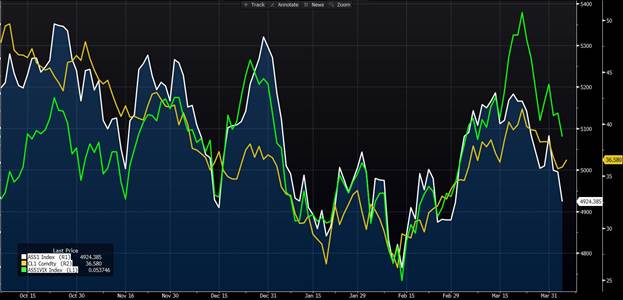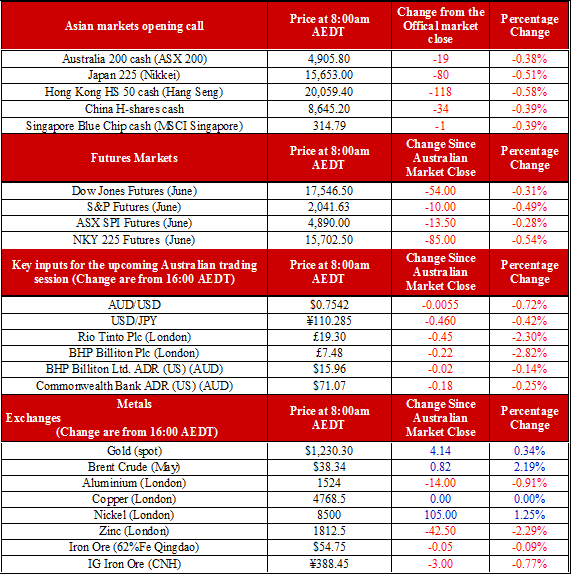Catalysts for change: part three – volatility
As the complacency trap that has been built up in March looks to have caught the markets out, I am jumping ahead in my three-part analysis of catalysts to cover part three: volatility.
Bullish for the VIX
- The VIX hit its lowest level since 4 August on 1 April as the S&P 500 made a new year-to-date high on Fed rate-hike bets declining.
- Overnight, the VIX added 8.5%, which is the largest one-day increase since mid-February. However, at 15.42, it is still below the 30-day moving average of 16.8, the 50-day moving average of 19.08 and the ten-year historical average of 19.5. Put protection in the US is still very low in the current environment.
- The Deutsche Bank (DE:DBKGn) complacency index hit its highest level of complacency since the height of the bull market in mid-2014 of 12.5 on 30 March, created by Yellen’s speech on the state of the US economy. The complacency index is a measure of put buying, US market direct investment and investor confidence. It’s the clearest presentation of contrarian risk in US markets and the reason I am bullish on volatility.
- The XVI (Australian volatility) has already snapped out of its February-to-March declines having hit its lowest level since July 2015 of 14.5 (pre-China CNY devaluation) due to bank share appreciations, China restocking iron ore and oil adding 55% from the February lows.
- However, the XVI is now above the 30-day moving average and is testing the ten-year historical average of 19. The 50-day moving average is 20.13, a level I see as easily reached, as the correlation with the oil price and the XVI is over 75%.
Oil is clearly driving the ASX and volatility; with oil being my first catalyst, the third catalyst of volatility confirming the risks for the second quarter are real and in the first stages of being confirmed.

Volatility will trigger a change in the trading dynamics of the markets, the US has clearly out run the ASX over the past 10 trading days as the Fed moves away from hikes; however, if the VIX snaps out of its low levels, it will confirm an inflection point in global markets.

